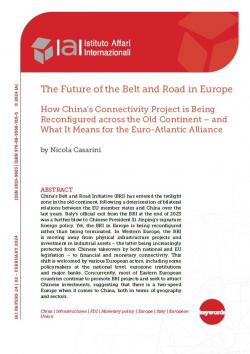The Future of the Belt and Road in Europe: How China’s Connectivity Project is Being Reconfigured across the Old Continent – and What It Means for the Euro-Atlantic Alliance
China’s Belt and Road Initiative (BRI) has entered the twilight zone in the old continent, following a deterioration of bilateral relations between the EU member states and China over the last years. Italy’s official exit from the BRI at the end of 2023 was a further blow to Chinese President Xi Jinping’s signature foreign policy. Yet, the BRI in Europe is being reconfigured rather than being terminated. In Western Europe, the BRI is moving away from physical infrastructure projects and investment in industrial assets – the latter being increasingly protected from Chinese takeovers by both national and EU legislation – to financial and monetary connectivity. This shift is welcomed by various European actors, including some policymakers at the national level, eurozone institutions and major banks. Concurrently, most of Eastern European countries continue to promote BRI projects and seek to attract Chinese investments, suggesting that there is a two-speed Europe when it comes to China, both in terms of geography and sectors.
-
Details
Rome, IAI, February 2024, 21 p. -
In:
-
Issue
24|02 -
ISBN/ISSN/DOI:
978-88-9368-316-6
Introduction
1. When the BRI reaches Southern Europe: The years of “enthusiasm”
2. Focus on Italy
3. The darkening of the BRI: The years of “pushback”
4. Two-speed Europe
5. Sino-European monetary connectivity
Conclusion
References



